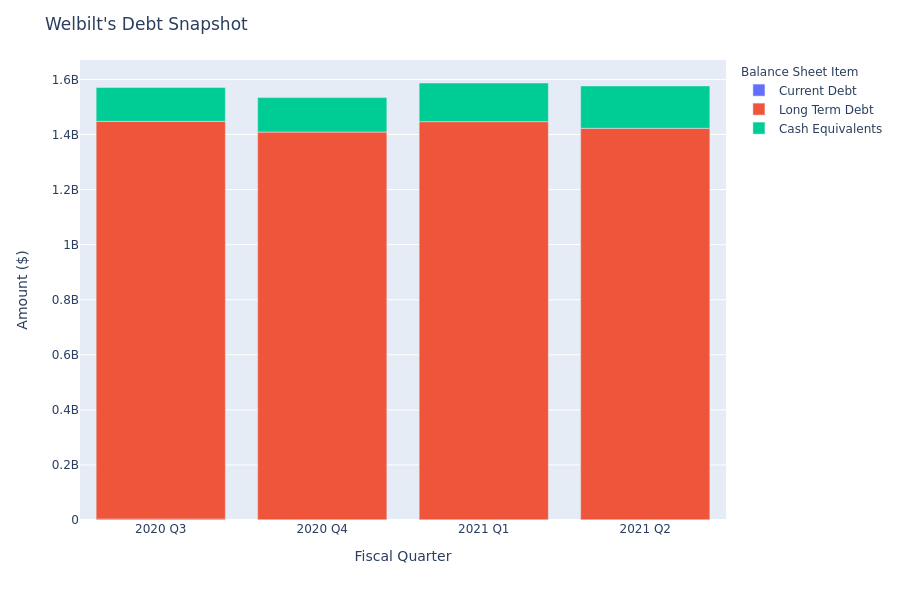Welbilt's Debt Overview
Author: Benzinga Insights | September 01, 2021 10:06am
Over the past three months, shares of Welbilt (NYSE:WBT) moved lower by 4.02%. Before having a look at the importance of debt, let us look at how much debt Welbilt has.
Welbilt's Debt
According to the Welbilt's most recent financial statement as reported on August 3, 2021, total debt is at $1.42 billion, with $1.42 billion in long-term debt and $1.00 million in current debt. Adjusting for $153.80 million in cash-equivalents, the company has a net debt of $1.27 billion.
Let's define some of the terms we used in the paragraph above. Current debt is the portion of a company's debt which is due within 1 year, while long-term debt is the portion due in more than 1 year. Cash equivalents include cash and any liquid securities with maturity periods of 90 days or less. Total debt equals current debt plus long-term debt minus cash equivalents.
To understand the degree of financial leverage a company has, shareholders look at the debt ratio. Considering Welbilt's $2.25 billion in total assets, the debt-ratio is at 0.63. Generally speaking, a debt-ratio more than one means that a large portion of debt is funded by assets. As the debt-ratio increases, so the does the risk of defaulting on loans, if interest rates were to increase. Different industries have different thresholds of tolerance for debt-ratios. A debt ratio of 40% might be higher for one industry and normal for another.
Why Shareholders Look At Debt?
Besides equity, debt is an important factor in the capital structure of a company, and contributes to its growth. Due to its lower financing cost compared to equity, it becomes an attractive option for executives trying to raise capital.
However, interest-payment obligations can have an adverse impact on the cash-flow of the company. Having financial leverage also allows companies to use additional capital for business operations, allowing equity owners to retain excess profit, generated by the debt capital.
Looking for stocks with low debt-to-equity ratios? Check out Benzinga Pro, a market research platform which provides investors with near-instantaneous access to dozens of stock metrics - including debt-to-equity ratio. Click here to learn more.

Posted In: WBT





